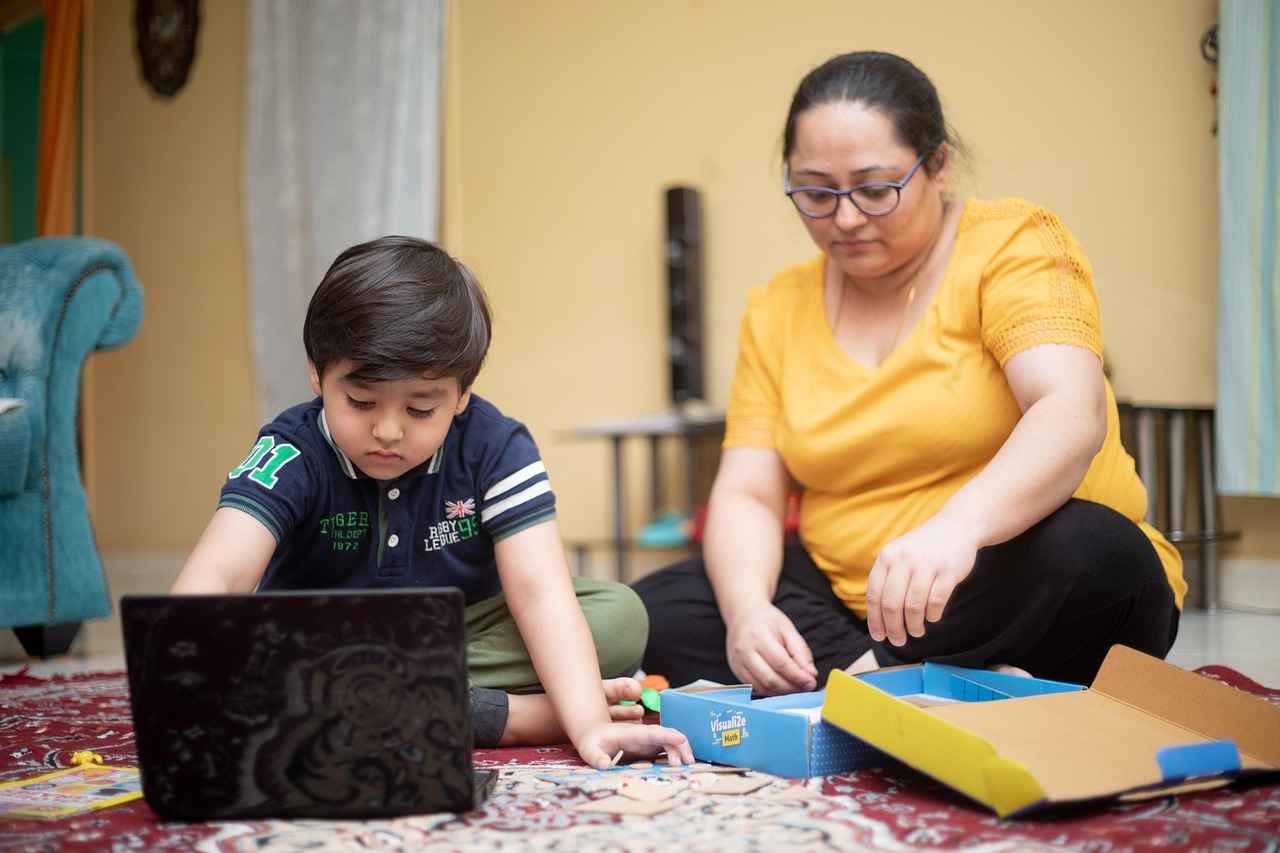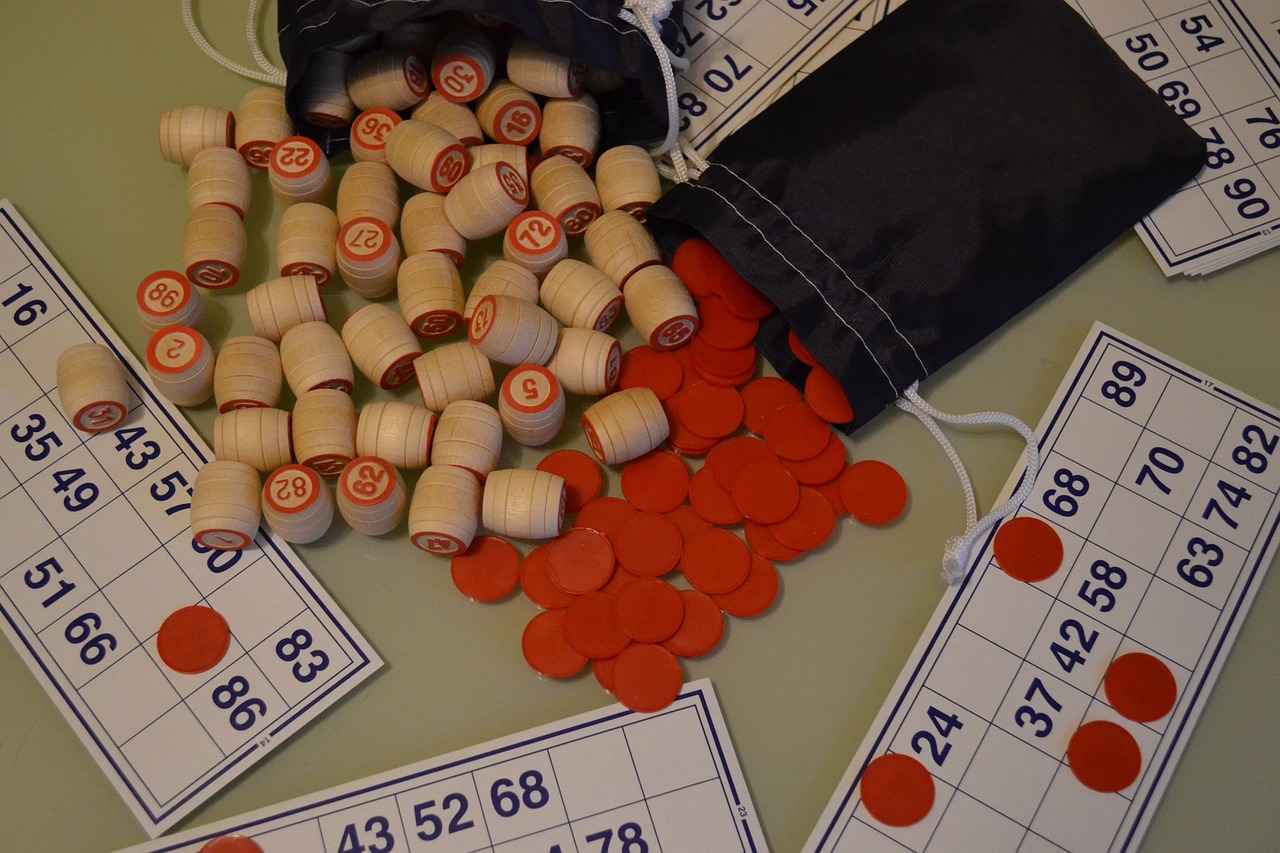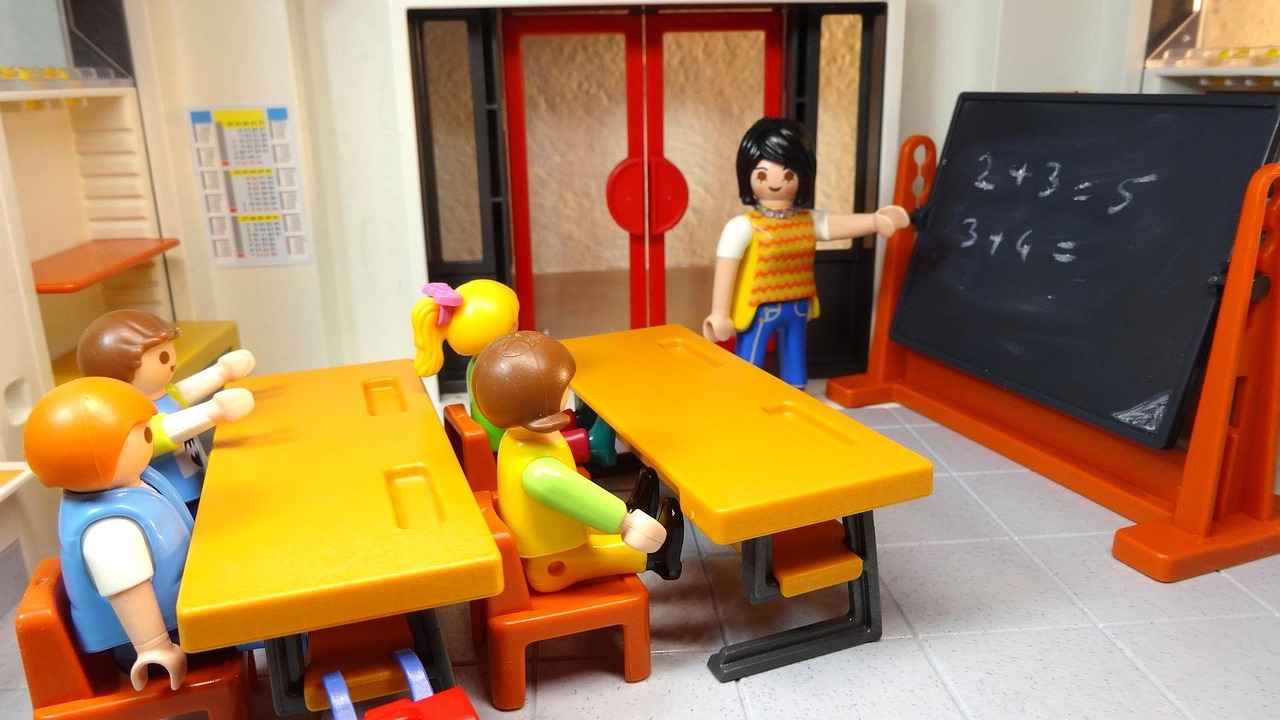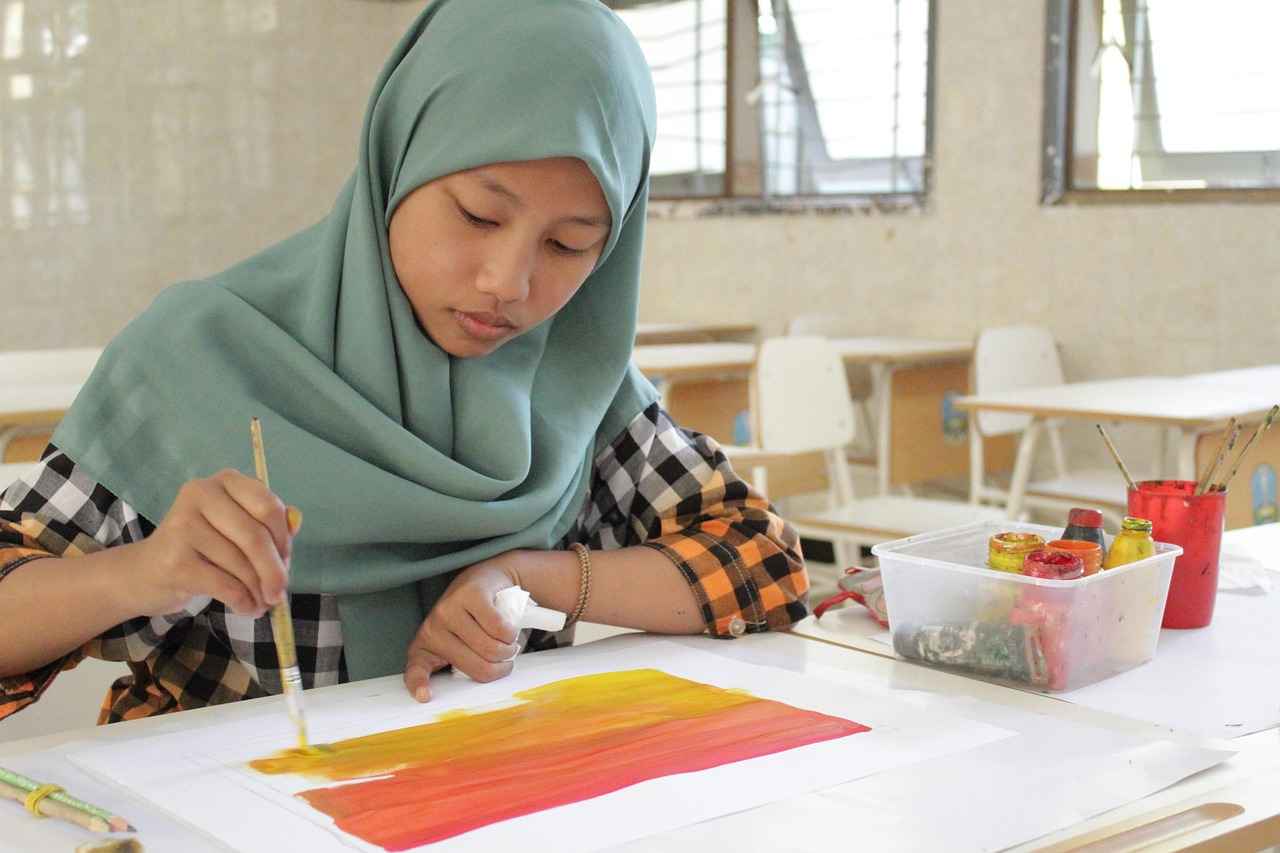This article delves into the various game modes offered by Blooket, a dynamic educational platform that transforms learning into an engaging experience. Each game mode is tailored to enhance student participation and learning outcomes, making it essential for educators to understand their unique features and benefits. This guide serves to assist teachers in selecting the most suitable mode for their classroom needs.
What is Blooket?
Blooket is an innovative online learning tool designed to make education fun and interactive. By merging traditional educational content with gaming elements, Blooket captivates students’ attention and encourages active participation. Teachers can create custom question sets or choose from a vast library, making it adaptable to various subjects and grade levels.
How to Get Started with Blooket
Getting started with Blooket is a breeze. Educators can easily sign up for an account, which allows them to create or import question sets. Once the content is ready, teachers can select from multiple game modes to engage their students. This flexibility ensures that Blooket can be tailored to meet diverse educational goals.
Overview of Blooket Game Modes
Blooket features several game modes, each designed to fulfill different learning objectives. Understanding these modes is crucial for educators to effectively integrate them into their lesson plans. The following sections will explore each mode in detail, highlighting its specific benefits and ideal usage scenarios.
Classic Mode: The Traditional Quiz Experience
Classic Mode is reminiscent of traditional quiz formats, where students answer questions to accumulate points. This mode is straightforward and familiar, making it an excellent choice for formative assessments. Educators can use Classic Mode to gauge student understanding and retention of material, fostering a competitive yet educational environment.
Match Mode: Speed and Accuracy Combined
Match Mode emphasizes quick thinking and accuracy as students race against the clock to match questions with their corresponding answers. This fast-paced game enhances cognitive speed and recall, making it particularly effective for reviewing vocabulary or key concepts. Teachers can utilize Match Mode to create a lively atmosphere that stimulates student engagement.
Team Mode: Collaboration in Learning
In Team Mode, students work collaboratively in groups to answer questions, promoting teamwork and communication skills. This mode not only encourages peer learning but also allows students to share knowledge and strategies. Team Mode is ideal for fostering a sense of community in the classroom while reinforcing content through discussion and collaboration.
Gold Quest: An Adventure in Learning
Gold Quest transforms learning into an adventurous experience, where students earn rewards as they progress through the game. This gamified approach keeps students motivated and engaged, as they strive to achieve goals and unlock new levels. Gold Quest is particularly effective for long-term learning objectives, as it encourages persistence and dedication.
Battle Royale: Competitive Learning at Its Best
Battle Royale pits students against one another in a competitive format where they answer questions to eliminate opponents. This exciting mode heightens engagement and fosters a spirit of healthy competition. Teachers can leverage Battle Royale to create a thrilling learning experience that motivates students to perform at their best.
Tower Defense: A Strategic Approach to Learning
Tower Defense challenges students to answer questions strategically to protect their towers from invading enemies. This unique gameplay not only reinforces content knowledge but also develops critical thinking skills as students must plan their moves carefully. Tower Defense is excellent for encouraging strategic thinking and problem-solving in a fun context.
How to Choose the Right Game Mode for Your Classroom
Selecting the appropriate Blooket mode is essential for achieving specific learning objectives. Educators should consider factors such as the subject matter, student engagement levels, and desired outcomes when making their choice. By aligning the game mode with educational goals, teachers can maximize the effectiveness of Blooket in their classrooms.
Integrating Blooket into Your Curriculum
Blooket can be seamlessly integrated across various subjects, enhancing lesson plans and complementing educational goals. Teachers can incorporate Blooket into daily reviews, test preparations, or as a fun break from traditional teaching methods. This versatility ensures that Blooket remains a valuable tool in any educator’s arsenal.
Best Practices for Using Blooket Effectively
To fully harness the benefits of Blooket, educators should adopt best practices such as preparing engaging question sets, encouraging participation, and assessing student performance effectively. By creating a supportive environment and utilizing the platform’s features, teachers can enhance the learning experience and ensure that students are both challenged and engaged.

What is Blooket?
Blooket is an innovative educational platform that transforms traditional learning into an engaging and interactive experience. By integrating game-based learning with educational content, Blooket captivates students’ attention and fosters a love for learning. This platform has gained popularity among educators seeking to enhance student participation and motivation in the classroom.
At its core, Blooket allows teachers to create unique question sets tailored to their curriculum. These question sets can cover a wide range of subjects, making it versatile for various educational needs. The platform supports a variety of game modes, each designed to cater to different learning objectives and styles, ensuring that every student can find a way to engage with the material effectively.
One of the standout features of Blooket is its ability to combine fun gameplay with serious learning. Students can participate in games that feel less like traditional assessments and more like enjoyable activities. This gamification of education not only keeps students engaged but also encourages them to retain information better. As they play, they earn rewards and points, which adds an element of competition and excitement to the learning process.
Moreover, Blooket provides valuable analytics for teachers. Educators can track student progress, identify areas where students may struggle, and adjust their teaching strategies accordingly. This data-driven approach enables personalized learning experiences, allowing teachers to meet the diverse needs of their students.
In addition to its educational benefits, Blooket fosters social interaction among students. Many of the game modes encourage collaboration and teamwork, helping students develop essential communication skills. This aspect is particularly beneficial in a classroom setting, where collaboration can enhance the learning experience and build a sense of community among peers.
Overall, Blooket stands out as a powerful tool for modern educators. Its unique blend of game mechanics and educational content makes it an effective choice for enhancing classroom participation and engagement. By utilizing Blooket, teachers can create a dynamic learning environment that not only motivates students but also supports their academic growth.

How to Get Started with Blooket
Getting started with Blooket is a seamless process designed to empower educators and engage students in innovative ways. This interactive learning platform allows teachers to harness the power of game-based education, making learning both enjoyable and effective. Below is a detailed guide to help you set up Blooket and begin using it in your classroom.
Step 1: Creating Your Account
To begin, visit the Blooket website and click on the “Sign Up” button. You can create an account using your email address or by linking an existing Google or Microsoft account. Once registered, you will have access to the dashboard where you can manage your question sets and game modes.
Step 2: Exploring Question Sets
Blooket allows educators to either create their own question sets or choose from a vast library of pre-made sets. To create a question set, navigate to the “Create” section. Here you can input your questions, answers, and even images to enhance the learning experience. Make sure to categorize your questions by subject or topic to facilitate easier access later.
- Creating Questions: Input your question text and provide multiple-choice answers.
- Adding Images: Enhance engagement by including relevant images.
- Organizing Sets: Group related questions together for thematic learning.
Step 3: Choosing Game Modes
Once your question set is ready, the next step is selecting a game mode that best fits your classroom dynamics. Blooket offers various modes, each with unique features designed to cater to different learning objectives. Popular modes include Classic, Match, and Team, each promoting different aspects of learning and engagement.
Step 4: Hosting a Game
After selecting a game mode, you can host a game by clicking on the “Host” button. You will be given options to customize the game settings, such as time limits and the number of questions. Share the game code with your students, and they can join using their devices. This real-time interaction fosters a competitive yet collaborative learning environment.
Step 5: Monitoring Progress
As the game progresses, you can monitor student performance through the Blooket dashboard. This feature allows you to see how students are faring in real-time, making it easier to identify areas where they may need additional support. Post-game analytics can also provide insights into overall class performance, helping you tailor future lessons accordingly.
Step 6: Feedback and Iteration
After the game, it’s crucial to gather feedback from your students. Discuss what they enjoyed and what could be improved. This feedback loop not only enhances the gaming experience but also informs your teaching strategies. Adjust your question sets and game modes based on this input to keep your lessons fresh and engaging.
In summary, setting up Blooket is straightforward and effective for enhancing student engagement. By following these steps, educators can create a dynamic learning environment that promotes collaboration, competition, and fun. Whether you are a seasoned teacher or new to the classroom, Blooket offers a versatile platform to enrich your educational practices.

Overview of Blooket Game Modes
Blooket is revolutionizing the way educators engage students through innovative game modes tailored for various learning objectives. Each mode offers a unique approach to learning, making it essential for teachers to understand these options to effectively integrate them into their lesson plans. Below, we explore the diverse game modes available on Blooket, highlighting their features, benefits, and ideal use cases.
- Classic Mode: This mode resembles a traditional quiz format, allowing students to answer questions for points. It promotes a competitive atmosphere, encouraging students to strive for accuracy and speed. Educators can utilize this mode for assessments or review sessions.
- Match Mode: In this fast-paced game, students race against the clock to match questions with their corresponding answers. This mode enhances cognitive speed and recall, making it ideal for subjects requiring quick thinking, such as mathematics or vocabulary.
- Team Mode: Collaboration is key in Team Mode, where students work in groups to answer questions. This mode fosters teamwork and communication skills, making it perfect for group projects or cooperative learning environments.
- Gold Quest: This adventure-themed mode allows students to earn rewards as they progress through questions. The gamified approach keeps students motivated and engaged, making it suitable for longer lessons or units of study.
- Battle Royale: A competitive format, Battle Royale pits students against one another in a race to answer questions correctly. This mode generates excitement and can be used as a fun assessment tool, especially in review sessions before exams.
- Tower Defense: In this strategic mode, students must answer questions to defend their towers from enemies. This gameplay encourages critical thinking and problem-solving skills, making it an excellent choice for subjects that require deeper comprehension.
Understanding these game modes allows educators to select the most effective tools for their lesson plans. By aligning the game mode with specific learning objectives, teachers can create a more engaging and productive classroom environment.
Incorporating Blooket into the curriculum not only enhances student participation but also fosters a love for learning through interactive and enjoyable gameplay. As educators become more familiar with these modes, they can better tailor their teaching strategies to meet the diverse needs of their students, ultimately leading to improved educational outcomes.

Classic Mode: The Traditional Quiz Experience
Classic Mode in Blooket provides a familiar and engaging environment for students to participate in quiz-based learning. This traditional format allows learners to answer a series of questions, earning points for correct responses. The structure is straightforward, making it easily accessible for both teachers and students.
- Structure of Classic Mode: In this mode, students are presented with multiple-choice questions. Each correct answer earns points, while incorrect answers may not penalize them significantly. This format encourages students to attempt every question, fostering a growth mindset as they learn from their mistakes.
- Advantages of Classic Mode: One of the primary benefits of Classic Mode is its simplicity. It is an excellent tool for formative assessment, allowing teachers to gauge student understanding in real-time. Additionally, the competitive aspect of earning points motivates students to engage actively with the material.
- Promoting Competitive Learning: The competitive nature of Classic Mode can enhance classroom dynamics. Students are often driven to perform better when they see their peers’ scores, creating an environment that encourages healthy competition. This can lead to improved retention of information as students strive to outperform one another.
How Classic Mode Enhances Learning
The Classic Mode not only serves as a tool for assessment but also enhances the overall learning experience. By incorporating game mechanics into the quiz format, Blooket makes learning more enjoyable. Students are more likely to retain information when they are engaged in a fun and interactive way.
- Encouraging Participation: The point system in Classic Mode encourages all students to participate, even those who may be hesitant in a traditional classroom setting. The non-threatening atmosphere allows learners to take risks without the fear of harsh penalties.
- Immediate Feedback: Classic Mode provides instant feedback on answers, which is critical for effective learning. Students can immediately see where they went wrong and understand the correct answers, facilitating a deeper understanding of the subject matter.
- Customizable Content: Teachers can tailor the questions to fit their curriculum, ensuring that the content is relevant and aligned with learning objectives. This customization makes Classic Mode a versatile tool that can be adapted to various subjects and grade levels.
Implementing Classic Mode in the Classroom
To maximize the benefits of Classic Mode, educators should consider several strategies. First, integrating it into regular lesson plans can help reinforce concepts taught in class. Teachers can use it as a review tool before exams or as an engaging way to introduce new topics.
- Creating Engaging Question Sets: The effectiveness of Classic Mode relies heavily on the quality of the questions. Teachers should strive to create questions that are challenging yet accessible, incorporating various difficulty levels to cater to all students.
- Utilizing Data Analytics: Blooket provides analytics that can help teachers track student performance over time. This data can inform instruction and help identify areas where students may need additional support.
- Fostering a Positive Environment: Emphasizing effort and improvement over competition can help cultivate a positive learning environment. Teachers should encourage students to focus on their personal growth rather than solely on their scores.
In conclusion, Classic Mode in Blooket offers a dynamic and effective way to engage students in learning through quizzes. By leveraging its structure and advantages, educators can create a competitive yet supportive classroom atmosphere that promotes active participation and enhances overall learning outcomes.

Match Mode: Speed and Accuracy Combined
Match Mode is an exhilarating feature within the Blooket platform that challenges students to pair questions with their corresponding answers as swiftly as possible. This unique game mode not only fosters an engaging learning environment but also significantly enhances cognitive abilities, particularly in areas such as recall speed and accuracy.
- Fast-Paced Learning: The essence of Match Mode lies in its rapid gameplay. Students are required to think quickly, which encourages them to process information at a faster rate. This urgency helps to improve their overall cognitive speed, making it an excellent tool for reinforcing knowledge.
- Enhanced Recall: Regular practice in Match Mode can lead to better retention of information. As students repeatedly engage with the material, their ability to recall facts and concepts improves, which is beneficial for long-term learning.
- Engagement and Motivation: The competitive nature of Match Mode keeps students engaged. The thrill of racing against the clock to make matches creates a fun atmosphere that motivates learners to participate actively.
Example of Match Mode in Action:- A student sees the question "What is the capital of France?" and must quickly find and click on "Paris" among several options.- The quicker they make the match, the more points they earn, encouraging them to improve their speed with each round.
Furthermore, Match Mode can be tailored to various subjects, making it versatile for different educational contexts. For instance, in a history class, students might match significant events with their dates, while in a science class, they could pair terms with their definitions. This adaptability ensures that educators can use Match Mode across the curriculum to reinforce learning objectives.
Benefits of Match Mode in Education
The advantages of incorporating Match Mode into classroom activities are numerous. First and foremost, it promotes active learning. Students are not mere passive recipients of information; instead, they engage with the content dynamically. This active engagement is crucial for deeper understanding and retention.
Additionally, Match Mode can foster a sense of community among students. When played in groups or teams, students can collaborate and support one another, enhancing their social skills while learning. This collaborative aspect is particularly beneficial in a classroom setting, where building relationships and teamwork are essential components of the educational experience.
Moreover, teachers can utilize Match Mode to assess student understanding in real-time. By observing how quickly and accurately students make matches, educators can gauge their grasp of the material and identify areas that may require further instruction. This immediate feedback loop is invaluable for tailoring teaching strategies to meet students’ needs effectively.
In conclusion, Match Mode stands out as an innovative tool that merges speed and accuracy in the learning process. Its ability to enhance recall, engage students, and provide instant feedback makes it a powerful addition to any educator’s toolkit. By leveraging the unique features of Match Mode, teachers can create an interactive and stimulating learning environment that not only meets educational goals but also inspires a love for learning among students.

Team Mode: Collaboration in Learning
In the realm of educational technology, Team Mode in Blooket stands out as a powerful tool for fostering collaboration among students. This innovative game mode encourages learners to work together in groups, promoting a sense of community and shared responsibility in their educational journey. By engaging in teamwork, students not only tackle questions collectively but also develop essential skills that are vital for their future.
One of the most significant advantages of Team Mode is its ability to enhance communication skills. When students collaborate, they must articulate their thoughts, listen to their peers, and negotiate solutions. This dynamic interaction helps them practice effective communication, which is crucial in both academic and social settings. For instance, as they discuss various answers, students learn to express their viewpoints clearly and respectfully, fostering a culture of open dialogue.
Moreover, teamwork in Team Mode promotes critical thinking. As students work together to solve problems, they encounter diverse perspectives that challenge their understanding. This exposure encourages them to think critically about the material, analyze different viewpoints, and arrive at well-rounded conclusions. The collaborative nature of this game mode transforms learning from a solitary activity into a shared experience, where students can leverage each other’s strengths.
Additionally, Team Mode enhances the overall learning experience through the concept of shared knowledge. When students collaborate, they pool their knowledge and skills, which can lead to a deeper understanding of the subject matter. For example, a student who excels in mathematics can help others grasp complex equations, while a peer with strong reading skills can assist in interpreting questions effectively. This mutual support not only reinforces individual learning but also builds a sense of camaraderie among classmates.
To implement Team Mode effectively, educators can encourage diverse group formations. Mixing students with varying skill levels and backgrounds can lead to richer discussions and more comprehensive learning outcomes. Teachers can also provide specific roles within each team, such as a facilitator, note-taker, or presenter, to ensure that every student is actively engaged and contributing to the group’s success.
Furthermore, integrating Team Mode into classroom activities can be seamlessly done by aligning it with curriculum objectives. For example, during a unit on history, students can work in teams to answer questions about significant events, fostering both collaboration and content mastery. This approach not only makes learning more enjoyable but also prepares students for real-world scenarios where teamwork is often essential.
In conclusion, Team Mode in Blooket serves as an effective platform for enhancing collaboration, communication, and critical thinking among students. By embracing this game mode, educators can create a dynamic learning environment that not only enriches the educational experience but also equips students with the skills necessary for success in their future endeavors.

Gold Quest: An Adventure in Learning
Gold Quest is a unique educational game mode within the Blooket platform that merges **learning** with **adventure**, offering students an engaging way to absorb knowledge while having fun. This game mode is designed to keep learners motivated and actively participating by transforming traditional learning into an exhilarating quest.
In Gold Quest, students embark on a journey where they can earn **rewards** as they progress through various challenges and questions. This gamified approach not only enhances the learning experience but also fosters a sense of achievement. As students answer questions correctly, they gain points and rewards that can be used to unlock new features or enhance their gameplay, making the learning process feel more like a game than a chore.
One of the most significant advantages of Gold Quest is its ability to maintain student engagement. The thrill of competition and the allure of rewards can significantly boost motivation levels. Students are encouraged to strive for better performance, not just for grades but for the fun and excitement of the game. This aspect is particularly beneficial in maintaining focus, especially for learners who might struggle with traditional educational methods.
Moreover, Gold Quest incorporates elements of **strategy** and **critical thinking**. As students progress, they must think critically about their answers and how to navigate through the challenges presented. This not only helps in reinforcing the content learned but also develops essential skills such as problem-solving and decision-making.
The design of Gold Quest is user-friendly, making it accessible for students of all ages. Teachers can easily integrate this game mode into their lesson plans, tailoring the questions to fit their curriculum. This adaptability allows educators to create a customized learning experience that meets the diverse needs of their students.
Additionally, Gold Quest promotes healthy competition among peers. Students can see how they rank against their classmates, which can foster a sense of camaraderie and motivation to improve. The social aspect of the game can lead to discussions among students about strategies and answers, further enhancing their learning experience.
In conclusion, Gold Quest stands out as a powerful tool in the educational landscape. Its combination of adventure, rewards, and critical thinking makes it a compelling choice for teachers looking to enhance student engagement and motivation. By integrating Gold Quest into the classroom, educators can create a dynamic learning environment that not only educates but also excites students about their academic journey.

Battle Royale: Competitive Learning at Its Best
The Battle Royale game mode in Blooket introduces an exhilarating competitive environment that captivates students and enhances their learning experience. This format not only fosters a sense of urgency but also encourages students to engage deeply with the material. By pitting participants against one another, it creates a dynamic atmosphere where students are motivated to perform at their best.
- Engagement through Competition: One of the primary appeals of Battle Royale is its competitive nature. Students thrive when they are challenged, and the thrill of competing against peers can drive them to invest more effort in their learning. This mode transforms traditional learning into an exciting contest, making even the most mundane topics feel fresh and stimulating.
- Immediate Feedback: Battle Royale provides instant feedback, allowing students to see how their answers stack up against their classmates. This immediate reinforcement helps students identify areas where they excel and where they may need improvement, fostering a growth mindset.
- Increased Retention: The adrenaline rush associated with competition can lead to better retention of information. When students know they are competing for a top spot, they are more likely to remember the material they studied. This mode encourages active recall, which is essential for effective learning.
Strategies for Implementation
To effectively integrate Battle Royale into the classroom, educators can adopt several strategies:
- Set Clear Objectives: Before starting a Battle Royale game, it’s crucial to define the learning objectives. Whether it’s reviewing vocabulary, practicing math problems, or reinforcing historical facts, setting clear goals ensures that the game aligns with educational outcomes.
- Encourage Sportsmanship: While competition is at the heart of Battle Royale, it’s important to promote a culture of respect and sportsmanship. Encourage students to celebrate each other’s successes and learn from their mistakes, fostering a supportive learning environment.
- Use Varied Question Types: To keep the game engaging, incorporate a mix of question types, including multiple-choice, true/false, and fill-in-the-blank. This variety can cater to different learning styles and keep students on their toes.
Benefits Beyond the Classroom
The advantages of using Battle Royale extend beyond immediate academic improvements. This game mode helps develop essential life skills such as:
- Critical Thinking: As students navigate through questions under pressure, they must think critically and quickly. This skill is invaluable not just in academics but in real-world situations.
- Collaboration and Communication: Even in a competitive setting, students can learn to communicate effectively and collaborate with their peers. They can discuss strategies and share knowledge, enhancing their social skills.
- Resilience: Experiencing wins and losses in a game can teach students resilience. They learn to handle setbacks gracefully and understand that failure is a part of the learning process.
In conclusion, the Battle Royale mode in Blooket offers a unique blend of competition and learning that can significantly enhance student engagement and retention. By incorporating this dynamic format into lesson plans, educators can create an exciting and effective learning environment that prepares students for future challenges.

Tower Defense: A Strategic Approach to Learning
Tower Defense is an innovative game mode in Blooket that transforms traditional learning into an engaging and interactive experience. In this mode, students must strategically answer questions to protect their towers from waves of approaching enemies. This unique gameplay not only makes learning fun but also encourages the development of essential critical thinking skills.
As students navigate through the challenges, they encounter various types of enemies, each representing different learning obstacles. To fend off these adversaries, students must correctly answer a series of questions related to the subject matter. This mechanism fosters a sense of urgency and excitement, motivating students to focus and engage deeply with the content.
- Enhanced Problem-Solving: Each question requires students to apply their knowledge and reasoning skills. This continuous cycle of answering questions and defending towers cultivates a mindset geared toward problem-solving.
- Strategic Planning: Players must decide which questions to prioritize based on the type of enemies approaching. This element of strategy encourages students to think ahead and plan their moves, mirroring real-life decision-making processes.
- Collaboration and Communication: When played in teams, Tower Defense promotes collaboration. Students can discuss strategies and share insights, enhancing their communication skills while learning from each other.
The gameplay mechanics of Tower Defense also incorporate elements of gamification, which is crucial for maintaining student interest. The visual representation of towers and enemies creates an immersive environment that captivates students. They are not merely answering questions; they are actively participating in a battle for knowledge.
Moreover, Tower Defense allows for differentiation in learning. Educators can tailor the difficulty of questions to match the varying skill levels of their students. This adaptability ensures that all students are challenged appropriately, fostering a sense of achievement as they progress through the game.
Incorporating Tower Defense into the classroom can also provide valuable insights into student performance. Teachers can track which questions were most challenging for students, allowing for targeted follow-up lessons. This data-driven approach enhances the overall learning experience by addressing gaps in understanding.
In conclusion, Tower Defense is more than just a game; it is a dynamic educational tool that nurtures critical thinking, strategic planning, and collaborative skills among students. By engaging in this mode, students are not only protecting their towers but also building a solid foundation for lifelong learning.

How to Choose the Right Game Mode for Your Classroom
Selecting the appropriate Blooket mode is essential for meeting your educational objectives and enhancing student engagement. With various game modes available, educators must consider several criteria to make informed decisions that align with their teaching goals. This section outlines key factors to consider when choosing the right game mode for your classroom.
- Learning Objectives: Begin by identifying the specific learning objectives you wish to achieve. Different modes cater to various educational goals, such as knowledge retention, collaboration, or critical thinking. For instance, if your goal is to reinforce vocabulary, Classic Mode might be suitable, while Team Mode can enhance collaborative skills.
- Student Engagement: Consider the interests and engagement levels of your students. Some students thrive in competitive settings, making Battle Royale an exciting choice. Others may prefer collaborative environments, where Team Mode can foster teamwork and communication.
- Classroom Dynamics: Analyze the dynamics of your classroom. Are your students more competitive or cooperative? Understanding their personalities can guide you in choosing a mode that resonates with them. For example, if your classroom is highly competitive, modes like Gold Quest or Battle Royale can stimulate enthusiasm and motivation.
- Time Constraints: Evaluate the time available for each session. Some game modes, like Match Mode, are fast-paced and can be completed quickly, while others, like Tower Defense, may require more time for strategic thinking and gameplay. Align the game mode with your lesson duration to maximize effectiveness.
- Technology Access: Ensure that your students have access to the necessary technology to participate in Blooket. Check if they have devices that can run the game smoothly. This consideration is crucial for ensuring that all students can engage without technical difficulties.
By taking these factors into account, educators can select the most suitable Blooket mode for their classrooms. It’s important to remember that the ultimate goal is to create an engaging and effective learning environment that meets the diverse needs of students. Experimenting with different modes throughout the academic year can also provide insights into what works best for your unique classroom setting.
In summary, choosing the right Blooket game mode requires a thoughtful analysis of your learning objectives, student engagement levels, classroom dynamics, time constraints, and technology access. By carefully considering these elements, educators can enhance the learning experience and achieve their educational goals effectively.

Integrating Blooket into Your Curriculum
Blooket is an innovative educational platform that can significantly enhance the learning experience when integrated thoughtfully into various curricula. By leveraging game-based learning, educators can make lessons more engaging, interactive, and effective. This section outlines practical strategies for incorporating Blooket into lesson plans, ensuring that it aligns with educational goals and objectives.
- Identify Learning Objectives: Before integrating Blooket, it is essential to clarify the specific learning objectives for your lesson. Determine what knowledge or skills you want students to acquire. This focus will help you select appropriate game modes and question sets that align with your educational goals.
- Choose Relevant Content: Blooket allows teachers to create custom question sets or select from existing ones. Ensure the content is relevant to the subject matter being taught. For instance, if you are teaching history, create questions that challenge students to recall important dates, events, and figures.
- Incorporate Different Game Modes: Blooket offers various game modes, each serving different educational purposes. For example, use Classic Mode for individual assessments and Team Mode to foster collaboration among students. By mixing game modes, you can cater to diverse learning styles and preferences.
- Facilitate Group Discussions: After a Blooket session, encourage students to discuss their answers and thought processes. This reflection helps deepen understanding and allows students to learn from one another. Facilitating discussions can also enhance critical thinking and communication skills.
- Assess Learning Outcomes: Utilize Blooket’s built-in analytics to track student performance. Analyze which questions were frequently missed to identify areas needing reinforcement. This data-driven approach enables educators to adjust their teaching strategies accordingly.
- Encourage Healthy Competition: Blooket’s competitive nature can motivate students to engage more deeply with the material. Create friendly competitions or challenges that encourage students to improve their scores over time, fostering a growth mindset.
- Integrate with Other Teaching Tools: Blooket can complement other educational tools and resources. For example, pair it with interactive presentations or hands-on activities to create a well-rounded learning experience. This integration can help reinforce concepts and cater to different learning modalities.
- Solicit Student Feedback: After using Blooket, ask students for their feedback on the experience. Understanding what they enjoyed or found challenging can help you refine future lessons and improve the overall effectiveness of your teaching methods.
By thoughtfully integrating Blooket into your curriculum, you can create a dynamic and engaging learning environment that not only captures students’ interest but also enhances their understanding of the material. The platform’s versatility allows it to be adapted for various subjects and learning objectives, making it a valuable tool for educators aiming to foster a love for learning in their classrooms.

Best Practices for Using Blooket Effectively
To fully harness the potential of Blooket, educators must adopt a set of best practices that enhance the learning experience. This section delves into effective strategies for preparation, student engagement, and performance assessment, ensuring that Blooket serves as a powerful educational tool.
Preparation: Setting the Stage for Success
Before diving into Blooket, teachers should invest time in preparation. This includes creating or selecting question sets that align with the curriculum. It’s essential to ensure that the questions are not only relevant but also appropriately challenging for the students’ grade levels. Additionally, teachers should familiarize themselves with the various game modes available, as each mode serves different educational purposes and can be tailored to specific learning objectives.
- Review Content: Ensure that the questions are accurate and reflect the learning material.
- Test Gameplay: Run through the game modes yourself to understand the mechanics and flow.
- Gather Resources: Collect supplementary materials or resources that can enhance the learning experience during gameplay.
Engagement Strategies: Keeping Students Involved
Engaging students during Blooket sessions is crucial for maximizing learning outcomes. Here are several strategies to foster participation:
- Incorporate Team Play: Utilize Team Mode to promote collaboration. Grouping students can lead to richer discussions and deeper understanding.
- Set Clear Objectives: Clearly outline the goals of the session. Let students know what they are expected to learn and how it ties into their overall education.
- Use Incentives: Consider offering small rewards or recognition for achievements during the game. This can motivate students to put forth their best effort.
Assessing Student Performance: Measuring Success
Assessment is a critical component of any educational activity. Blooket provides several ways for educators to evaluate student performance effectively:
- Review Game Results: After each session, analyze the results to identify areas where students excelled or struggled. This data can inform future lessons.
- Conduct Follow-Up Assessments: Use traditional quizzes or discussions to reinforce the concepts learned during Blooket gameplay.
- Provide Feedback: Offer constructive feedback based on performance. Highlight strengths and areas for improvement to guide students in their learning journey.
By implementing these best practices, educators can ensure that Blooket not only enhances student engagement but also effectively supports the learning objectives of their curriculum. The combination of thorough preparation, active engagement strategies, and robust performance assessment creates a dynamic learning environment that maximizes the educational benefits of Blooket.
Frequently Asked Questions
- What is Blooket?
Blooket is an interactive learning platform that combines educational content with engaging game-based learning, making it a favorite among educators looking to enhance classroom participation.
- How do I get started with Blooket?
Getting started with Blooket is a breeze! Simply create an account, choose or create question sets, and select your preferred game mode to engage your students effectively.
- What are the different game modes available in Blooket?
Blooket offers several game modes, including Classic Mode, Match Mode, Team Mode, Gold Quest, Battle Royale, and Tower Defense, each designed to cater to different learning objectives and classroom dynamics.
- How can I choose the right game mode for my classroom?
Selecting the right game mode depends on your learning objectives. Consider factors like student engagement, the subject matter, and the skills you want to develop when making your choice.
- Can Blooket be integrated into various subjects?
Absolutely! Blooket can be seamlessly integrated into different subjects, allowing educators to use it as a versatile tool to complement their lesson plans and educational goals.
- What are some best practices for using Blooket effectively?
To maximize Blooket’s benefits, educators should prepare thoroughly, engage students with diverse strategies, and regularly assess student performance to ensure effective learning outcomes.














